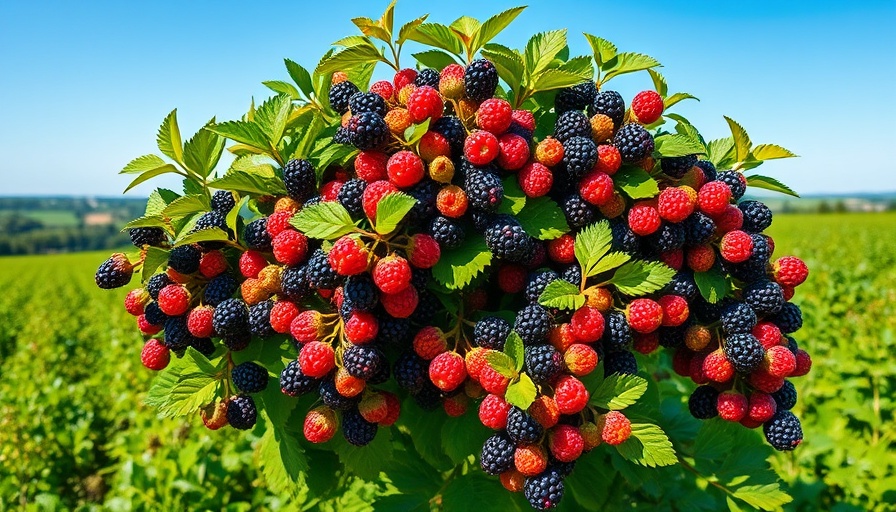
Unlocking the Secrets of Blackberry Bush Maintenance
For those vying for the tastiest and healthiest blackberries, understanding how and when to prune these robust plants is fundamental. Regular pruning not only controls the wild, thorny nature of blackberry bushes but significantly boosts fruit production, leading to a bountiful harvest each season. The beauty of blackberries lies in their genetic structure; they are perennial plants, which means once established, gardeners indulge in frequent yields of delicious berries year after year.
Know Your Canes: Primocanes vs. Floricanes
One of the most critical aspects of blackberry pruning is the recognition of the two different types of canes—primocanes and floricanes. Primocanes are the new, green growths that sprout each spring, while floricanes are the woody canes that produce fruit in the summer and die off after their productive season. Proper pruning practices depend heavily on understanding these two types; failing to do so could result in stunted growth or diminished fruit yields. Ideally, each plant should blossom with both primocanes and floricanes to maximize production. It’s essential to prune primocanes in early spring and floricanes in the late summer to maintain a healthy plant lifecycle.
Spring Pruning: Preparing for a Bountiful Harvest
As the cold winds of winter fade, early spring presents the perfect opportunity to trim back the vigorous growth of primocanes. When pruning these canes, keep only four to six strong shoots per plant. Any damaged or diseased canes should be removed at this point to ensure the overall health of the plant. Furthermore, topping the primocanes when they reach around two feet encourages branching. More branches typically mean more fruit, setting the stage for a fruitful harvest.
The Essential Fall Cleanup: Floricane Pruning
Once the summer season has spilled its last ripe blackberries, it’s time for fall maintenance. Trim away the old floricanes to clean up the beds and promote robust growth of fresh primocanes in the upcoming spring. Deciding when to execute this cleanup is vital. By pruning after the harvest, gardeners create space for new shoots and prevent the spread of diseases that may linger on the dead wood.
Common Missteps in Blackberry Care
While pruning might seem straightforward, many novice gardeners make common mistakes that can hinder plant health. One prevalent issue is not pruning enough. Allowing too many canes can lead to overcrowding, which stifles air circulation and sunlight, leading to disease and reduced yields. Another common error is the timing of the pruning. Pruning too late or too early can negatively impact the plant's productive capabilities, showcasing the importance of adhering to recommended timelines.
Tools You Need for Successful Blackberry Pruning
Having the right tools is essential for effective pruning. A pair of high-quality, sharp pruning shears will make clean cuts that promote better healing on the canes. Additionally, gloves are useful not only for protection against thorns but also for a comfortable grip while maneuvering through bushy brambles. Some seasoned gardeners also recommend a lopper for larger canes, ensuring precise cuts that encourage healthy growth.
Looking Ahead: The Future of Your Blackberry Patch
By following proper pruning techniques for both primocanes and floricanes, you’re setting the stage for your blackberry bushes to thrive. A well-maintained blackberry patch not only promises a delicious harvest but also enhances your backyard landscape. Imagine biting into sun-ripened berries freshly picked from your garden. That's the sweet reward for all your hard work in maintaining these beautiful plants.
As you consider expanding your gardening pursuits, think about integrating sustainable practices like composting and companion planting to further enrich your soil and support biodiversity.
Ready to transform your gardening skills? Embrace these pruning techniques and enjoy the journey towards cultivating not just a blackberry bush, but a flourishing garden that brings joy and fruitfulness.
 Add Row
Add Row  Add
Add 




Write A Comment